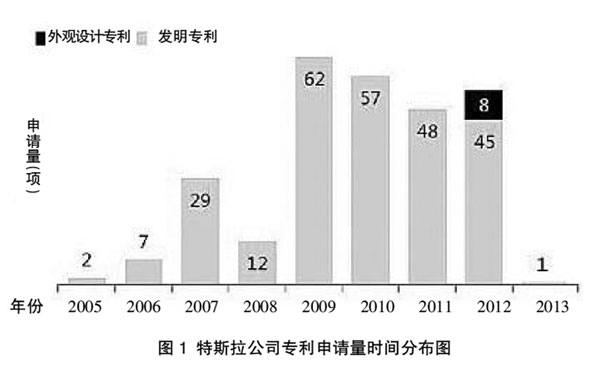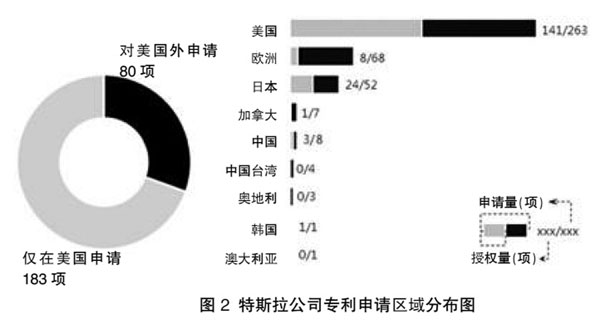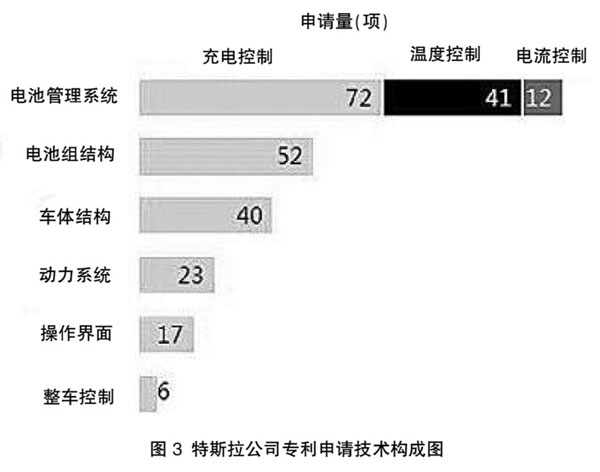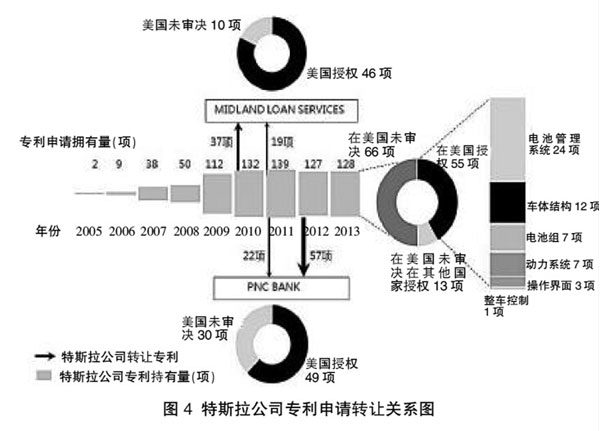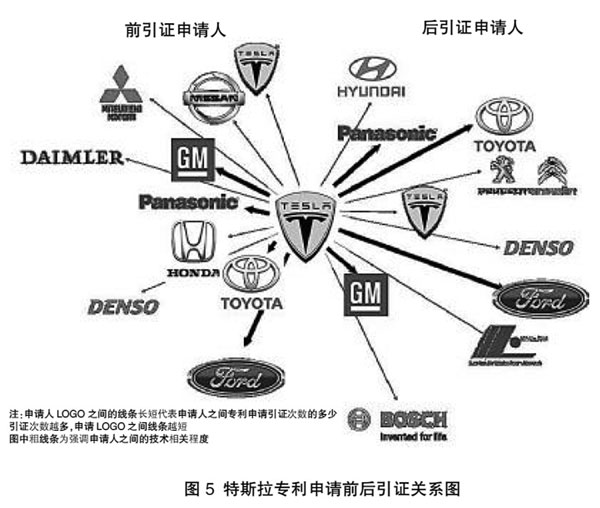On June 12, 2014, Tesla CEO Ellen Musk released a post titled "My Our Patent Are Belong To You," which has aroused great repercussions in the industry. In order to analyze the deep-seated reasons for Tesla's implementation of this patent open strategy, the Patent Office of the Patent Office of the State Intellectual Property Office of Patent Examination cooperated with the examiner of the electric vehicle and battery field in Sichuan Center to use Tesla on a global scale. The patent application conducted an in-depth analysis to analyze the impact of Tesla’s patent opening strategy on the field of pure electric vehicle technology. This paper is published in particular and hopes to bring readers thought and inspiration. Tesla Opens Patented In-Depth Analysis of Electric Vehicles Under the background of advocating energy conservation and emission reduction globally, the research and application of electric vehicles has become a new hot spot in the automotive industry. The highly anticipated US Tesla Motors (hereinafter referred to as Tesla Corporation) has been investing in the development of pure electric vehicles since 2003. It has used luxury, intelligence and environmental protection as the selling point. It delivered the first pure electric motor from 2008. The roadster Roadster started to whirl around the world with a whirlwind of high-end pure electric vehicles. However, when Tesla was widely considered in the industry to lead the global electric vehicle technology and gradually form an industrial advantage, on June 12, 2014, Tesla CEO Ellen Musk announced that for the development of electric vehicle technology, special Slar company will open all its patented technologies. Anybody who wishes to use these patented technologies in good faith will not initiate patent litigation against Tesla. This incident triggered a great deal of discussion about its patent strategy for pure electric vehicles. What are the areas in which Tesla’s open patents specifically relate to, and how should these patents be used in good faith? What is the purpose of Tesla’s open patented technology? This article will analyze these readers’ concerns. How many patent applications have Tesla submitted? The author used the patent search and service system of the State Intellectual Property Office and searched the Chinese and English patent databases with the applicant, inventor, keywords and IPC (International Classification Number) as the entrance. The search results showed that as of June 21, 2014, Tesla disclosed a total of 271 patent applications worldwide, including 263 patent applications for inventions and 8 applications for design patents. From the overall trend of time distribution of patent applications shown in Figure 1, Tesla began to submit patent applications from 2005. The number of initial applications is small. In 2009, the maximum number of applications reached 62, and it can be seen in its early investment. After five years of breakthroughs, the company also won the best time to raise funds and was listed in the United States in 2010. Subsequently, the company has maintained a relatively high annual patent application volume, and the annual application amount is more than 40 items. Due to the time required for the disclosure of the patent application, the patent application data submitted in 2013 and 2014 cannot currently be obtained from the database. Therefore, the number of applications shown in Figure 1 in 2013 and 2014 is relatively small. From the retrieved patent data, it can be seen that all of Tesla's 8 design patent applications were filed in 2012. The company did not submit a design patent application in the early stages of development, and in 2008 it achieved mass production. The year has not yet submitted related patent applications for designs. Its exterior design patents mainly concern hubs, exterior shapes, doors, interior displays, seats, and charging connectors. Among them, there are 3 hub design patents, and only 1 exterior design patent. From Tesla's total number of patent applications, its design patent application accounted for only 3%, indicating that although Tesla's unique design changed many people's impression of electric cars, but it did not design Protection is the focus of its patented layout, which is a relatively short time to enter the automotive industry, and it is not unrelated to the accumulation of vehicle design. It is worth noting that from the perspective of the currently published patent application, it does not submit a design patent application in China, which means that Chinese car manufacturers can refer to their design elements when designing a car. Figure 2 shows Tesla's patent application regional distribution. It can be seen from the figure that its 263 patent applications are mainly concentrated in the United States, and 183 of them only filed patent applications in the United States. This shows that Tesla has made the United States its most important market. In addition to the United States, 30.5% of patent applications (80 items) have entered countries other than the United States. The countries or regions that entered the most countries are Europe and Japan in sequence, but the number is significantly lower than the patent applications filed in the United States. It can be seen that Tesla has already started to use Europe and Japan as its upcoming market. Tesla’s patent applications in China are relatively small, with a total of only 8 items. In terms of patent authorization, Tesla has 263 patent applications for inventions in the United States, of which 141 have been granted patents and others are still pending. Of the 68 patent applications filed in Europe, 8 have been granted patents, while 24 of Japan's 52 patent applications have been granted patents, and the authorization rate is as high as 46%. Three of China's eight applications have been granted patents. Reading indexing and technical analysis were performed on the retrieved patents, and the technical composition diagram of the patent application shown in FIG. 3 was obtained. It can be seen that Tesla's patent applications mainly relate to battery management systems (including battery pack charge control, temperature control, and current control), battery pack structure, body structure, power system, operation interface, and vehicle control. Among them, in the field of battery management system, battery structure, and body structure, the number of patent applications filed is large. In the area of ​​battery management systems that Tesla is adept at, its patent applications amounted to 125, accounting for 47.5% of its total invention applications. The company’s patent applications for battery packs have also reached 52. It can be seen that Tesla has the largest research input in the field of electric vehicle batteries, and battery-related patent applications have accounted for 67% of the total applications. At the same time, because Tesla's pure electric vehicles are different from traditional pure electric vehicles, they also have certain investments in the areas of car body structure, power system, and operation interfaces. An in-depth study of the battery management system shows that Tesla's R&D focuses on charge control, temperature control, and current control. The technical direction with the largest number of patent applications is the direction of charge control, a total of 72 items, accounting for 27% of the total number of applications. It is worth mentioning that Tesla's patent applications submitted for battery temperature control and current control accounted for 22% of the total applications, and it also actively promoted the construction of Tesla's exclusive super charging station, which can be achieved at 20 Charging 50% within minutes. In addition, Tesla has begun to provide electric vehicle power system solutions to other automakers, reflecting Tesla's investment in this area with more technology and funding. How many patents does Tesla have? Ellen Musk announced that Tesla will open all patented technologies. How many patents does Tesla actually own? The author conducted an in-depth search and statistical analysis of Tesla’s patent ownership transfer and found Slat Company has transferred a lot of patent rights to its held patents. As shown in Figure 4, from the INCOPAT database, between 2010 and 2012, over 135 of 271 patent applications filed under the Tesla company had patent assignments, of which 79 were assigned to The PNC Bank Association (PNC BANK, NATIONAL ASSOCIATION), 56 items were transferred to Midland Loan Services (INC.), and 20 patent applications involved two transfer of rights that were first transferred to rice. The Delan Credit Services Company was then transferred to the PNC Banking Association. From the perspective of patent applications for the transfer of ownership of patents, most of them are US-licensed patents, which account for 70.4% of the total amount of patents transferred. There are only 55 U.S. authorized patents still held in the hands of Tesla, of which 43.6% are related to battery management technology, 13 are pending in other countries, and 13 are pending in the United States. In the United States, 66 pending patent applications still need to wait for further review. Readers can not help but ask, where is the PNC Banking Association and Midland Loan Services company sacred, which allows the Tesla company in the practicing industry to transfer more than half of its patent ownership rights? Looking back at Tesla's history of development, it can be seen that 2010 was a vital year for Tesla. On January 20, 2010, Tesla formally signed an agreement with the US Department of Energy (DOE) and the Federal Financing Bank (FFB) to become one of the first three companies to receive the US Department of Energy’s advanced technology auto manufacturing loan program. Slara received a total of $465 million in low-interest loans. The PNC Banking Association and Midland Loan Services Co., Ltd. play a key guarantee role in the US Department of Energy's loan program. In addition, from Tesla's 2011 annual report, it can be seen that Tesla signed a Collateral Trust Agreement with the PNC Banking Association and Midland Loan Services on January 20, 2010. Although the author has no way of knowing the detailed text of the agreement, it can be seen from the patent ownership transfer records in the INCOPAT database that Tesla has pledged more than half of its patent ownership to the PNC Banking Association and Midland Loan Services. . Although Tesla announced on May 22, 2013, that it had completed the repayment of the U.S. Department of Energy's loan, it is worth noting that in the INCOPAT database, Tesla’s rights to the above 135 patents and patent applications remain It is the PNC Banking Association and Midland Loan Services. Therefore, even if Ellen Musk claims that Tesla has opened all its patents, users still need to pay attention to who is the real owner of the patented technology they use when using these patented technologies. How far can Tesla's patent go? Even if Tesla opened up his current patent rights, there are still many technical barriers for other manufacturers to further develop and manufacture electric vehicles based on their technology. As we all know, the most important thing in Model S is the thousands of batteries in the car. According to a report from the GigaOm website in 2011, these batteries were not actually developed and produced by Tesla itself, but were purchased from Matsushita’s NCR18650B battery (nickel-cobalt-aluminum system), and this part of the patent still belongs. Matsushita Corporation. The author conducted searches on Matsuno Electric and Sanyo Electric (Matsushita Electric’s acquisition of Sanyo Electric in 2009) and found that Panasonic’s current patent applications in the battery field totaled 6,773, and the patent applications involving nickel-cobalt-aluminum batteries totaled 286 items. It mainly relates to cathode materials, anode materials, electrolytes, and other technical fields such as battery manufacturing. In addition, through a preliminary search in the database, it is found that the number of patent applications related to pure electric vehicles currently disclosed has reached 33.725 million, involving a battery-related patent application for pure electric vehicles of 1,373.6 thousand. In contrast, Tesla's 263 patent applications opened up to less than 1% of all patents. It remains to be seen whether Tesla's patent-opening move will excite the entire electric car market. The author continues to study the technical relevance of Tesla's companies and electric vehicle related companies. After citation and citation analysis of U.S. patents held by Tesla, the relationship between Tesla's patent applications before and after the application is shown in Figure 5. From Fig. 5, it can be seen that Tesla’s patent applications have a lot of interaction with auto companies and battery manufacturers. Tesla’s patent applications mostly quoted patents from companies such as Toyota, Panasonic, General Motors, and Ford, and the patents of these companies also cited Tesla’s patents. The number of patents cited or cited between them was More often than not, it shows that these companies have strong technical relevance. If other EV companies conduct R&D on Tesla's open patents, they may also be liable for patent litigation from these companies. Based on the above analysis, it is easy to see that, compared with traditional automotive companies, Tesla has its core battery management technology, battery and body structure technology, and its proprietary technology is in a disadvantageous position. For its own patented technology, it is still surrounded and restricted by other auto companies. Even if it is used by itself, there is a possibility of triggering patent litigation, not to mention that third parties use the technology “in good faithâ€. It is for these reasons that Ellen Musk announces that Tesla will open all its patented technologies, more from the perspective of marketing strategies, hoping to use this approach to bring in more technical followers and expand its The influence of electric vehicle technology in the entire pure electric vehicle field has enabled companies that use their patents to jointly promote the development of their battery management systems and unique charging methods to form industry standards and control the entire industry chain. In the end, Tesla will become the biggest beneficiary of its technology route and gain huge commercial benefits no matter who uses Tesla’s electric vehicle patents. We provide air-conditioner switches, hydraulic screw switches, globe valves, pressure relief valves, conversion valves, oil valves for aviation systems. Product Models, QSF-6A, YSF-4, RSF-1, RSF-2, RSF-10, QSF-8, QSF-8A, QXF-1A, QXF-1B, RXF-23, RXF-25, RXF-29, RXF-5A, RXF-40, RXF-42, RXF-44, YXF-12, YXF-13, YXF-15, YSF-4, YSF-6, YSF-8, YSF-10, YSF-12, YSF-14, YSF-16, YSF-4A, YSF-6A, YSF-8A, YSF-10A, YSF-12A, YSF-14A, YSF-16A, YSF-18A, YSF-20A, YSF-25A, ect. Quality meets standards related to aviation ground equipment. We also offer other Aviation Equipment Spare Parts, such as RYL Fuel Filters, Ql Air Filters , Yl Hydraulic Oil Filters, Filter Elements . Hydraulic Pressure Relief Valve,Air Pressure Relief Valve,Pressure Reducing Valve,Aviation Reducing Valve Xinxiang Tianrui Hydraulic Equipment CO.,LTD , http://www.trfiltration.com